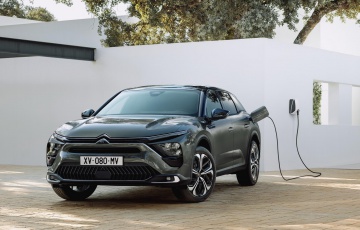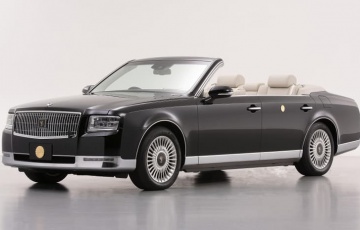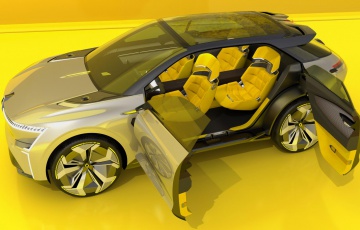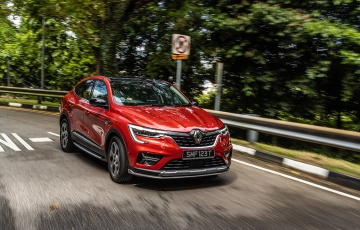Renault Espace... this is your life
As we are welcoming the new one, here's the strange history of the original MPV
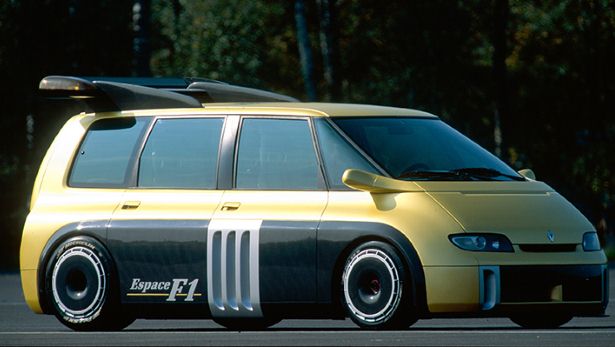
A certain Jeremy Clarkson once claimed he'd rather have a vasectomy than a MPV. But if in 1984 that option was too late for the fertile men of the time, Renault had the answer: the Espace.
Before then, the only option for family with lots of kids was to (a) leave an offspring at home, (b) cable-tie little Jimmy to the roof-rack, or (c) buy a bus.
Offering a far more sensible solution, the seven-seat Espace should have been an instant success. It wasn't.
Daft as it might seem to say now, the original Espace too radical. At first, families didn't get it. Like really didn't get it. The Espace sold just NINE units in its first month on sale.
Things thankfully picked up. In the Espace's thirty-year history, more than 1,245,000 units over the model's four generations and 30-year lifespan have been sold. And as we've driven the new, fifth-generation, crossover-inspired Espace, we thought we'd look through the life and times of the magnificent 'monospace'.
Words: Rowan Horncastle

Generation I (1984-91)
The Espace wasn't the first vehicle to come up with the idea of moving lots of people in one car. Before its inception, the VW Kombi, Fiat 600 Multipla and Stout Scarab could all carry multiple passengers. But the Espace was the first true MPV for the masses.
It was designed at Chrysler by a Brit, Fergus Pollock, in the 70s. The concept kicked around the Chrysler/Simca chain of command for a while until they finally found someone to build it: Matra.
The Espace was originally intended to be sold as a Talbot, but when Matra got the gig they approached Renault, who adopted the project after PSA Peugeot Citroen decided it was too radical, risky and expensive to pursue themselves.
So, in 1984, the Espace was launched. Fashioned from the foundations of a warm-galvanized steel chassis that utilised the same technique and assembly line at the factory as the three-seat, little-missed Matra Murena, the Espace was a fibreglass box on wheels offering previous unknown opportunities within.
Thanks to a flexible seating structure, there were limitless opportunities to rearrange your deckchairs. Two swiveling captain's chairs up front and five individual removable, folding seats behind,meant you could basically turn the Espace into a rolling whatever-the-hell-you-want. Mobile office? Sure. Peripatetic pilates studio? No problem. Indoor picnic arena? Easy.
And, as Richard found out a couple of years ago, the first-gen Espace had some real racing DNA hidden deep down in its loins.
When TG pitted against a Toyota Previa, a Toyota MasterAce, a Mitsubishi Space Wagon and a Nissan Serena, two Espaces claimed a victorious one-two in the inaugural Historic People Carrier Racing race.

Generation II (1991-1996)
Although the Espace had a hard time with initial sales, the public eventually came round to the idea. After a slow start, as the Eighties became Nineties, the Espace became a mainstay of the European car scene.
Which is why the second generation remained largely unchanged from the first. It shared the same chassis as its predecessor, but its interior was revised with a new dashboard, front seats that transformed into beds (sort of), and extra cubbyholes for the kids to find new places to leave rotting apple cores.
A V6 petrol with an auto 'box was also added to the lineup. As was the Espace Quadra. Equipped with permanent four-wheel-drive, the Quadra allowed French families in Nineties-tastic all-in-one fluoro jumpsuits to hit the slopes on skinny skis with ease.
The second-gen Espace cemented the MPV revolution, with an impressive 316,518 produced over five years.
TOP GEAR TOP FACT: When a car was required to transport a very special birthday candle known as the Olympic torch to the 1992 Barcelona Olympics, there was only one pair of safe hands for the job. The mighty Espace, a car referred to by almost no one as 'the Linford Christie of MPVs'.

Top Gear drop-top Espace
The chassis of the Espace didn't change from Gen 1 to Gen 2. And as Jeremy, James and Richard found out, these foundations were so strong they could withstand being angle-ground in half to create the world's-fist cabrio MPV.
TG's cabrio could easily withstand doing 100mph (with a little help of a rear passenger becoming a critical structural support for the canvas roof), attack by killer, fruit-eating monkeys at Woburn Safari Park, and even the modern-day car wash. Check it out here.

Renault Espace F1
Utterly drunk on the success of the Espace, in 1994 Matra and Renault decided in a moment of madness to make one of the greatest school-run cars ever: the Espace F1.
To commemorate the MPV's tenth anniversary, as well as Renault's third Formula 1 championship as an engine supplier, it was decided that two birds could be killed with one massive V10 engine, by putting the heart of an F1 car into the body of a people mover. Genius.
As you can see above, the yellow beast is a little different to a standard Espace. The chassis was made of lightweight carbonfibre, but some elements of the bodywork from the standard car were retained, such as the glass, roof panel, hood and tailgate.
The rest of the bodywork was swollen to accommodate the 3.5-litre, 40-valve Renault V10 engine from a 1993 Williams-Renault FW15C, leaving the poor Espace looking like it'd been stung by a horsefly.
Slapped the middle of the car, that engine needed to breathe so the bodywork was punctuated with huge slats, grilles and ducts. There was also a carbon fibre wing placed on top so the Espace didn't topple over.
Performance figures? Weighing just 1,300kg and with the V10's wick turned up from 700bhp to 820bhp, this soccer-mom mobile could accelerate to 100km/h in 2.8 seconds. And thanks to whopping carbon-ceramic brakes, could go from nought to 270km/h and back to zero in less than 600 meters.
The best thing? You and three of your mates could enjoy the F1 MPV experience. Inside lurked four carbon-backed race seats, the ones in the back straddling the monster V10. The driver gripped a hilariously large steering wheel, with two small yellow buttons left and right of the horn operating the 6-speed semi-automatic transmission.
It was, of course, a strict one-off, and never offered to the public.
Now watch this video (created by Nouxe Productions) of the beast being wound out. And bear in mind that Eric Bernard, the former Larrousse and Liger F1 driver who helped developed the Espace F1, claimed you got the best grip in the car when cornering on two wheels. Nutter.

Generation III (1996-2002)
Any child who had the pleasure of being delivered to badminton/ballet/musket-shooting classes in the back of a third-gen Espace will confirm, this wasn't a car - it was a blimmin' spaceship.
With a centrally-mounted wraparound dashboard that housed a digital display that could be seen from all seats, and gas-strut tables on the back of the two front seats, kids could feel like part of the Rebel Alliance while stuck in traffic.
The design of the MkIII Espace was classy inside and out (nothing says sporty like wing mirror vents, right?) and didn't attempt to mess with the tried-and-tested formula of its predecessors. But Renault did extend the wheelbase to make the Grand Espace, presumably so the children who grew up as toddlers in the Gen 1 Espace would have more legroom as teenagers in the Gen 3.

Sbarro Espace Spider
In 1998, the management company behind the Le Mans 24-hour race wanted a car that could efficiently and swiftly whisk high-profile guests around the circuit. Somehow - and we don't know how - they eventually concluded the best way to do this was by lopping off the roof of an Espace.
This job was farmed out to automotive loon-tuners Sbarro. Instead of going for a simple(ish) cabrio, Sbarro conceived an utterly brilliant four-door spider with a two-one-two seating formation.
There was no windscreen, a 194bhp Renault V6 up front and a central exhaust firing out the back. It may not have been fast five-up, but it made one hell of a statement going round track.
Sadly no production Espace Spider followed.

Generation IV 2002-2014
The fourth-gen Espace launched into a tougher world than its predecessors. Times had changed since the Eighties, and consumers had got the taste for a new family-car flavour: the crossover.
MPV sales were declining as people hopped out of their people movers and into SUVs. At least the fourth-gen Espace was 90% recyclable, therefore easier to dispose of.
We haven't seen the Espace in the UK since Renault decided to take the axe to half its range back in 2012. Sadly us right-hand drivers aren't slated to get the all-new, crossover-inspired version either, though company sources say that might change given sufficient public demand.
And, while you're at it Renault, how about a five-seat Spider version with an F1 engine?

Generation V 2015-
Doesn't look much like a traditional, slab-sided MPV, does it? Renault, cottoning on to the notion that nobody buys these types of cars anymore, has made the all-new Espace much more crossover-ery - if that's a thing.
And it really is box fresh. It sits on a brand new platform developed by Renault-Nissan, with new engines, new suspension and a completely new interior design.






